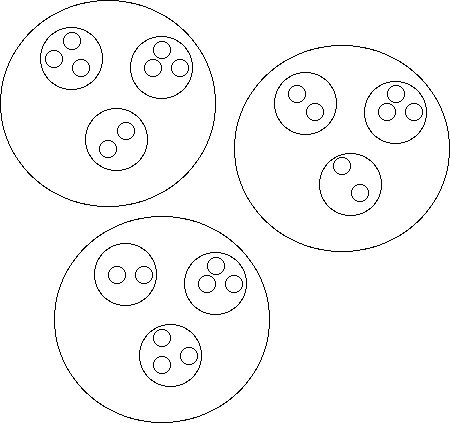Serendip is an independent site partnering with faculty at multiple colleges and universities around the world. Happy exploring!
Reply to comment

Bio 103, Lab 2, Darwin's Voyage Revisited Revisited
The funding agencies were impressed by the results of the initial surveys of plant life on Nearer and Farther. The findings clearly indicate that there is a diversity of plant life on both planets, while highlighting difficulties in categorizing such life (problems that are familiar from previous experience on Earth). In general, more effective categorizing schemes seem to involve
- acknowledgement of the possibility that the appearance of individual organisms may change over time
- descriptions in terms that can be conveyed as unequivocably as possible to other observers, including quantification where possible
- the use, where possible, of qualitative (logically exclusive) instead of quantitative characteristics
- the observations of "natural clusters" in which
- there is an absence of intermediate forms
- several different characteristics correlate with one another
The funding agencies also suspect that additional observations at other than normal human scales might help to further characterize the diversity of plant life on Nearer and Farther .
With the objective of getting less wrong about characterizing plant life on Nearer and Farther, each of the original expeditionary groups is encouraged to make a second expedition to the planet they did not visit on their first expedition. Each group should prepare for that expedition by reading a prior report on that planet. The new expedition should focus on plants that are less than 1 meter and include both naked eye observations and observations at the scale of centimeters and millimeters. Additional equipment will be provided to facilitate this shift of scale.
The report of each group should include a summary of observations of patterns of similarities and differences among plants at the two observational scales, a critical evaluation of the prior work on that planet with regard to numbers of kinds of plants, and a discussion of whether plant life appears more or less diverse when viewed at successively smaller spatial scales.
Relevant information about plant life on earth:
- Will Franklin's Plant and Fungi Key for Biology Courtyard
- Plant Systematics Collection, from the University of Wisconsin
- Plantae: Systematics, from the University of California, Berkelely
In the event of inclement planetary conditions:
Your group should create a classifying scheme for a selected group of earth organisms (pictures provided). After doing so, you should compare your classifying scheme with ones used by professional biologists, as exemplified by one of the two following
Your group's report should describe the rationale and logic of the classifying scheme you develop and discuss its pros and cons relative to that of whichever other classifying scheme you working with. See classification: uses and caveats
For what purpose is one classifying?
Is there "nested clumpy diversity"?



